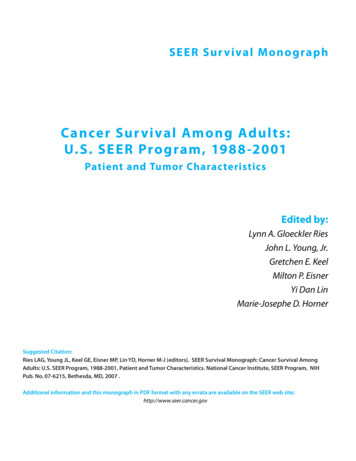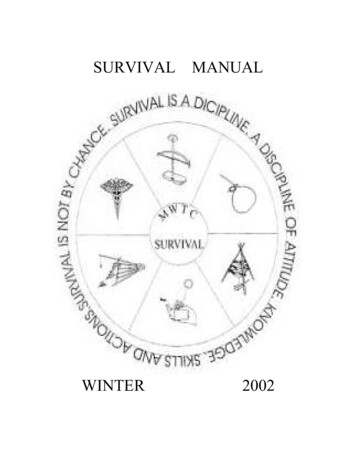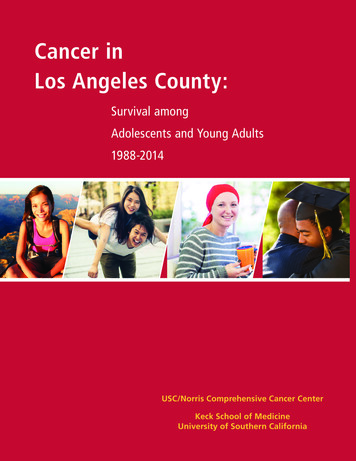
Transcription
Cancer inLos Angeles County:Survival amongAdolescents and Young Adults1988-2014USC/Norris Comprehensive Cancer CenterKeck School of MedicineUniversity of Southern California
Cancer inLos Angeles County:Survival amongAdolescents and Young Adults1988-2014Lihua Liu, PhDAmie E. Hwang, PhDDiana Moke, MDKai-Ya Tsai, MSPHLos Angeles Cancer Surveillance ProgramAYA@USCKatherine Y. Wojcik, PhDMyles Cockburn, PhDUSC/Norris Comprehensive Cancer CenterThe Keck School of Medicine ofthe University of Southern CaliforniaDennis Deapen, DrPH2017Suggested citation:Liu L, Hwang AE, Moke D, Tsai KY, Wojcik KY, Cockburn M, Deapen D (eds.). Cancer in Los AngelesCounty: Survival among Adolescents and Young Adults 1988-2014. Los Angeles Cancer SurveillanceProgram, University of Southern California, 2017.Copyright 2017 by the University of Southern CaliforniaAll rights reservedThis document, or parts thereof, may be reproduced in any form with citation.
FOREWORD. . . . . . . . . . . . . . . . . . . . . . . . . . . . . . . . . . . . . . . . . . . . . . . . . . . . . . . . . . . . . . . . . 4EXECUTIVE SUMMARY. . . . . . . . . . . . . . . . . . . . . . . . . . . . . . . . . . . . . . . . . . . . . . . . . . . . . . . . . 6PREFACE . . . . . . . . . . . . . . . . . . . . . . . . . . . . . . . . . . . . . . . . . . . . . . . . . . . . . . . . . . . . . . . . . . . 8INTRODUCTION. . . . . . . . . . . . . . . . . . . . . . . . . . . . . . . . . . . . . . . . . . . . . . . . . . . . . . . . . . . . .Adolescent and Young Adult (AYA) Cancers. . . . . . . . . . . . . . . . . . . . . . . . . . . . . . . . . . . . . . . . . . .Historical Background of the CSP . . . . . . . . . . . . . . . . . . . . . . . . . . . . . . . . . . . . . . . . . . . . . . . . . .The Diverse Population of Los Angeles County. . . . . . . . . . . . . . . . . . . . . . . . . . . . . . . . . . . . . . . . .How Cancer Is Registered. . . . . . . . . . . . . . . . . . . . . . . . . . . . . . . . . . . . . . . . . . . . . . . . . . . . . . . . .Use of CSP Data for Research. . . . . . . . . . . . . . . . . . . . . . . . . . . . . . . . . . . . . . . . . . . . . . . . . . . . . .The Importance of Investigating Time Trends and Survival. . . . . . . . . . . . . . . . . . . . . . . . . . . . . . . .Protection of Confidentiality. . . . . . . . . . . . . . . . . . . . . . . . . . . . . . . . . . . . . . . . . . . . . . . . . . . . . . .1010101112121213MATERIALS AND METHODS. . . . . . . . . . . . . . . . . . . . . . . . . . . . . . . . . . . . . . . . . . . . . . . . . . . .Cancer Data. . . . . . . . . . . . . . . . . . . . . . . . . . . . . . . . . . . . . . . . . . . . . . . . . . . . . . . . . . . . . . . . . . .Statistical Methods. . . . . . . . . . . . . . . . . . . . . . . . . . . . . . . . . . . . . . . . . . . . . . . . . . . . . . . . . . . . . .Cautions in Interpretation. . . . . . . . . . . . . . . . . . . . . . . . . . . . . . . . . . . . . . . . . . . . . . . . . . . . . . . . .14141515OVERVIEW OF AYA CANCER IN LOS ANGELES COUNTY. . . . . . . . . . . . . . . . . . . . . . . . . . . . . . .Total Number of AYA Cancer Cases by Race/Ethnicity. . . . . . . . . . . . . . . . . . . . . . . . . . . . . . . . . . . .Incidence Rates of AYA Cancers . . . . . . . . . . . . . . . . . . . . . . . . . . . . . . . . . . . . . . . . . . . . . . . . . . . .Cancer-Specific 5-Year Survival Rates. . . . . . . . . . . . . . . . . . . . . . . . . . . . . . . . . . . . . . . . . . . . . . . .16161719ContentsCONTRIBUTING AUTHORS AND EDITORS. . . . . . . . . . . . . . . . . . . . . . . . . . . . . . . . . . . . . . . . . . . 2CANCER-SPECIFIC SURVIVAL by patient and tumor characteristics . . . . . . . . . . . . . . . . . . . . . 24Bone and Other Soft Tissue Sarcomas. . . . . . . . . . . . . . . . . . . . . . . . . . . . . . . . . . . . . . . . . . . . . . . . 24Brain and Central Nervous System. . . . . . . . . . . . . . . . . . . . . . . . . . . . . . . . . . . . . . . . . . . . . . . . . . 31Breast. . . . . . . . . . . . . . . . . . . . . . . . . . . . . . . . . . . . . . . . . . . . . . . . . . . . . . . . . . . . . . . . . . . . . . . . 36Cervix. . . . . . . . . . . . . . . . . . . . . . . . . . . . . . . . . . . . . . . . . . . . . . . . . . . . . . . . . . . . . . . . . . . . . . . . 41Colon and Rectum . . . . . . . . . . . . . . . . . . . . . . . . . . . . . . . . . . . . . . . . . . . . . . . . . . . . . . . . . . . . . . 46Kaposi Sarcoma . . . . . . . . . . . . . . . . . . . . . . . . . . . . . . . . . . . . . . . . . . . . . . . . . . . . . . . . . . . . . . . . 51Kidney. . . . . . . . . . . . . . . . . . . . . . . . . . . . . . . . . . . . . . . . . . . . . . . . . . . . . . . . . . . . . . . . . . . . . . . . 58Leukemia . . . . . . . . . . . . . . . . . . . . . . . . . . . . . . . . . . . . . . . . . . . . . . . . . . . . . . . . . . . . . . . . . . . . . 63Lip, Oral Cavity and Pharynx. . . . . . . . . . . . . . . . . . . . . . . . . . . . . . . . . . . . . . . . . . . . . . . . . . . . . . . 75Lung. . . . . . . . . . . . . . . . . . . . . . . . . . . . . . . . . . . . . . . . . . . . . . . . . . . . . . . . . . . . . . . . . . . . . . . . . 80Lymphoma, Hodgkin. . . . . . . . . . . . . . . . . . . . . . . . . . . . . . . . . . . . . . . . . . . . . . . . . . . . . . . . . . . . . 85Lymphoma, Non-Hodgkin. . . . . . . . . . . . . . . . . . . . . . . . . . . . . . . . . . . . . . . . . . . . . . . . . . . . . . . . . 90Melanoma . . . . . . . . . . . . . . . . . . . . . . . . . . . . . . . . . . . . . . . . . . . . . . . . . . . . . . . . . . . . . . . . . . . 102Ovary . . . . . . . . . . . . . . . . . . . . . . . . . . . . . . . . . . . . . . . . . . . . . . . . . . . . . . . . . . . . . . . . . . . . . . . 107Stomach. . . . . . . . . . . . . . . . . . . . . . . . . . . . . . . . . . . . . . . . . . . . . . . . . . . . . . . . . . . . . . . . . . . . . 112Testis. . . . . . . . . . . . . . . . . . . . . . . . . . . . . . . . . . . . . . . . . . . . . . . . . . . . . . . . . . . . . . . . . . . . . . . . 117Thyroid. . . . . . . . . . . . . . . . . . . . . . . . . . . . . . . . . . . . . . . . . . . . . . . . . . . . . . . . . . . . . . . . . . . . . . 124Uterus. . . . . . . . . . . . . . . . . . . . . . . . . . . . . . . . . . . . . . . . . . . . . . . . . . . . . . . . . . . . . . . . . . . . . . . 129APPENDIX A: DETAILED METHODS. . . . . . . . . . . . . . . . . . . . . . . . . . . . . . . . . . . . . . . . . . . . . . 134APPENDIX B: SEER AYA SITE RECODE . . . . . . . . . . . . . . . . . . . . . . . . . . . . . . . . . . . . . . . . . . . 136APPENDIX C: DEFINITIONS OF AYA CANCER SITES BY CHAPTER. . . . . . . . . . . . . . . . . . . . . . . 141APPENDIX D: DATA SELECTION CRITERIA FOR SUPPLEMENTAL GRAPHS. . . . . . . . . . . . . . . . . 1421 Los Angeles Cancer Surveillance Program and AYA@USCDISTRIBUTION OF AYA CANCER CASES by anatomic site, race/ethnicity, and sex. . . . . . . . . . . 20
CONTRIBUTING AUTHORS AND EDITORS2 Los Angeles Cancer Surveillance Program and AYA@USCCONTRIBUTING AUTHORS AND EDITORSJuliana L. Austin, MD1Amie E. Hwang, PhD2Assistant Professor, PediatricsAssistant Professor, Preventive MedicineAfsaneh Barzi, MD2Gino K. In, MD2Assistant Professor, MedicineAssistant Professor, MedicineLaurie Brunette, MD2Syma Iqbal, MD2Assistant Professor, Obstetrics & GynecologyAssociate Professor, MedicineMyles Cockburn, PhD2Eunjung Lee, PhD2Professor, Preventive MedicineAssistant Professor, Preventive MedicineVictoria K. Cortessis, PhD2Lihua Liu, PhD2Associate Professor, Preventive MedicineAssociate Professor, Preventive MedicineWendy Cozen, DO2Maria Maruffi, MD1Professor, Preventive MedicineFellow, Pediatric Hematology & OncologyDennis Deapen, DrPH2Leo Mascarenhas, MD1Professor, Preventive MedicineAssociate Professor, PediatricsGirish Dhall, MD1Koji Matsuo, MD, PhD2Associate Professor, PediatricsAssistant Professor, Obstetrics & GynecologyTanya Dorff, MD2Troy McEachron, PhD2Assistant Professor, MedicineAssistant Professor, Translational GenomicsSandrah P. Eckel, PhD2Roberta McKean-Cowdin, PhD2Assistant Professor, Preventive MedicineAssociate Professor, Preventive MedicineLoraine A. Escobedo, PhD3Ann Mohrbacher, MD2Post-doctoral Scholar-Research AssociateAssociate Professor, MedicineDavid R. Freyer, DO, MS1Diana Moke, MD1Professor, Pediatrics and MedicineFellow, Pediatric Hematology & OncologyFrank D. Gilliland, MD, PhD2Fariba Navid, MD1Professor, Preventive MedicineAssistant Professor, PediatricsAnn Hamilton, PhD2Jorge J. Nieva, MD2Professor, Preventive MedicineAssociate Professor, MedicineJames S. Hu, MD2Lynda D. Roman, MD2Associate Professor, MedicineAssociate Professor, Obstetrics & Gynecology
Associate Professor, MedicineStefanie Thomas, MD1Assistant Professor, PediatricsV. Wendy Setiawan, PhD2Associate Professor, Preventive MedicineKai-Ya Tsai, MSPH2Analyst, Preventive MedicineShilpa A. Shahani, MD1Attending Physician, Hematology, Oncology,and Blood and Marrow TransplantationAnil Tulpule, MD2Associate Professor, MedicineRecinda L. Sherman, PhD4Program Manager, Data Use & ResearchMariana C. Stern, PhD2Professor, Preventive MedicineCarrie Tayour, PhD5Epidemiologist, Toxics EpidemiologyProgramNaveed Wagle, MD2Assistant Professor, NeurologyKatherine Y. Wojcik, PhD2NCI T32 Fellow, Preventive MedicineAnna Wu, PhD2Professor, Preventive MedicineCONTRIBUTING AUTHORS AND EDITORSChristy A. Russell, MD2Affiliations:1. Children’s Hospital Los Angeles.2. Keck School of Medicine, University of Southern California.3. Spatial Sciences Institute, Dornsife College of Letters, Arts and Sciences, University of Southern California.4. North American Association of Central Cancer Registries.5. Los Angeles County Department of Public Health.3 Los Angeles Cancer Surveillance Program and AYA@USCAmanda M. Termuhlen, MD1Professor, Pediatrics
FOREWORDforEwordFor years to come, Cancer in Los Angeles County: Survival among Adolescents and YoungAdults 1988-2014, will undoubtedly serve as a polestar in the world of adolescent andyoung adult (AYA) cancer epidemiology. This monograph represents the second installmentin a twopart exploration of incidence and survival trends among AYAs diagnosed with cancerin Los Angeles County. In reporting data from the demographically diverse population ofSouthern California, this extensive analysis both turns over new ground and establishes abenchmark for measuring AYA survival globally. Although some findings provide a degree ofreassurance that the “war on cancer” is going reasonably well, others are—or ought to be—profoundly disturbing to us all.4 Los Angeles Cancer Surveillance Program and AYA@USCThis project addresses two broad questions in relation to AYA cancer: First, what proportionof AYAs is surviving after diagnosis with one of the 18 cancer types examined? Second, whatimpact do certain clinical, socioeconomic and demographic factors have on survival? As thereader will discover, the answers depend on where and how deep one looks. For example, thesedata confirm that survival after Hodgkin lymphoma, testicular cancer and thyroid cancer islargely very good. However, for some highly curable cancers like these, survival continues tofall years later, raising important questions about causes of late mortality. For other cancerssuch as stomach cancer, the survival probability remains dismal, illustrating the need forbetter therapies and earlier detection. For other cancers with intermediate survival, prognosisremains dependent on clinical stage, where access to care and education may be importantfactors to examine.While serving as critically important benchmarks, some of these observations may not bealtogether surprising to clinicians experienced in treating AYAs. The same cannot be saidfor the more detailed analyses. In non-Hodgkin lymphoma, men have dramatically lowersurvival than women. Within the AYA spectrum, age may be either a survival advantage ordisadvantage, depending on the cancer. Sadly, for many cancers, startling relationships areapparent between survival, socioeconomic status and race/ethnicity. Taken together, these datagenerate urgent questions and new hypotheses in realms as diverse as cancer and host biology,environment, health services access and delivery, and cancer survivorship. Throughout it all,the need for cultural competency in both designing research and delivering cancer care andeducation has rarely appeared so compelling.This project has drawn upon the outstanding faculty, staff and resources associated with theLos Angeles Cancer Surveillance Program, led by Dennis Deapen, DrPH, including theKeck School of Medicine of the University of Southern California (USC), the USC NorrisComprehensive Cancer Center, and Children’s Hospital Los Angeles, among others. Wehave the distinct pleasure of working with this expanding group of talented and dedicatedresearchers that has coalesced around the unique scientific and clinical challenges posed inAYA oncology. It is noteworthy that whereas the first monograph, published only two yearsago, was devoted to cancer incidence among AYAs in Los Angeles County and involved 14contributors, this survival monograph benefits from 43. We congratulate all of them, and
David R. Freyer, DO, MSJames S. Hu, MD, FACPCo-Medical Director,Adolescent and Young Adult Cancer Program,USC Norris Comprehensive Cancer CenterCo-Medical Director,Adolescent and Young Adult Cancer Program,USC Norris Comprehensive Cancer CenterDirector, Survivorship and Supportive Care ProgramMember, Leukemia/Lymphoma ProgramDirector, Sarcoma Program,USC Norris Comprehensive Cancer CenterChildren’s Center for Cancer and Blood Diseases,Children’s Hospital Los AngelesDirector, Medical Oncology Fellowship Program,USC Norris Comprehensive Cancer CenterProfessor of Clinical Pediatrics and MedicineKeck School of Medicine, University of Southern CaliforniaAssociate Professor of Clinical Medicine,Keck School of Medicine, University of Southern CaliforniaFOREWORDespecially Dr. Deapen and his co-editors, for successfully completing this substantial andmuch-needed analysis. Most of all, it is our sincere hope that the work represented hereinwill improve the lives of our AYA patients, their families, and our fellow citizens in thiscommunity of Los Angeles County we call home.COL (RET), USARTerry David Church, DRSc, MA, MS5 Los Angeles Cancer Surveillance Program and AYA@USCProgram Manager,Adolescent and Young Adult Cancer Program,USC Norris Comprehensive Cancer Center
EXECUTIVE SUMMARYEXECUTIVE SUMMARYThe Los Angeles Cancer Surveillance Program (CSP) serves as a resource to monitor trends and patternsof cancer incidence and survival. By monitoring trends, it identifies population subgroups at high risk ofcancer and cancer related death, generates new hypotheses regarding cancer causes, and informs governmentofficials and policymakers in determining funding for treatment and related social services. Examinationsof population-based cancer survival patterns among adolescents and young adults (AYAs) 15-39 years ofage by certain characteristics, such as sex, age, race/ethnicity, socioeconomic status (SES), and cancer stage*at diagnosis, provide a better understanding of the effectiveness of cancer treatments and help to identifysubgroups of AYAs who are at greatest risk of cancer related death. Highlights of the survival differences foundin this report include the following: AYA men have lower survival rates than AYA women for most of the cancers examined, except for a few(e.g., breast, colorectal, stomach cancers, and leukemia) that show no clear survival difference by sex. Younger AYAs have a survival advantage for some cancers (e.g., lung cancer, lymphomas), while for othercancers older AYAs have better survival (e.g., breast, colorectal, and stomach cancers). Compared to other racial/ethnic groups, black AYAs generally have the poorest survival rates for most cancertypes, including cancers of lung, stomach, and testis. For many cancers (e.g., cervical, kidney) AYAs of higher SES have better survival, but for other cancers (e.g.,stomach, uterus) SES does not make any difference in survival. AYAs diagnosed with early stage* cancers consistently have better survival than those diagnosed late,regardless of cancer type.6 Los Angeles Cancer Surveillance Program and AYA@USCFor the most common cancer types, survival patterns are summarized as follows: Breast cancer survival is worse for blacks, younger AYAs and those of low SES. Thyroid cancer has excellent survival overall, with only very minor survival differences. The only importantprognostic factor appears to be stage* at diagnosis. Survival for testicular cancer is overall good with some differences by subtype. For seminoma testicularcancer, survival difference is only seen by SES, with those of lower SES having lower survival. For nonseminoma testicular cancer, survival is lower in older AYAs, highest in non-Latino whites, and lowest inthose of lower SES AYA men with melanoma have lower survival than women. Lower survival is also seen among blacks andlow SES. Melanoma has the largest survival difference by stage*. Five-year survival rate is 96% for earlystage* disease and 9% for distant stage* disease.
Hodgkin lymphoma is typically a very curable cancer, although men, blacks, older AYAs, and those oflow SES have lower survival. For non-Hodgkin lymphoma, men do dramatically worse than women. In addition, blacks, older AYAs,and those of low SES show worse survival. Kaposi Sarcoma survival has greatly improved after adequate treatment for HIV was introduced,however still remains lowest among blacks and those of low SES. Cervical cancer, now preventable with vaccination and screening, has lower survival among blacks, olderAYAs and those of low SES. For brain and central nervous system cancers, survival is lower for men, older AYAs and those of lowSES.EXECUTIVE SUMMARY The substantial differences among ratesof most cancers among subgroups suchas men and women and various race/ethnic groups provide clues for a betterunderstanding of cancer.7 Los Angeles Cancer Surveillance Program and AYA@USC* Stage of disease at diagnosis: Early stage cancer has not spread from original location (Localized). Late stage cancer hasspread beyond original location (Regional, Distant).
PREFACEPrefaceCancer is the leading cause of non-accidental death among adolescents and young adults (AYA)(ages 15- 39 years) in the United States (U.S.). Outcomes for children and older adults with cancerhave improved greatly over the past three decades, however there has been little or no improvement insurvival among AYA cancer patients. The reasons for this are not entirely understood and are likelymulti-factorial, including differences in tumor biology, insurance coverage, clinical trial participation andadherence to treatment.Understanding this unique population is a critical first step in developing effective clinical and researchprograms for AYA cancer patients and in targeting effective cancer control. High-quality cancer registriesare central to those efforts. In each U.S. state, cancer registries identify newly diagnosed cancer patientsand determine their survival experiences to track trends and create opportunities for research.The Los Angeles Cancer Surveillance Program (CSP) is the population-based cancer registry for LosAngeles County, California. Since 1972, the CSP has collected and analyzed information on all newcancers diagnosed among residents of the County. Over the past 45 years, with the participation ofphysicians, hospitals and cancer patients, this information has produced major contributions to theknowledge and understanding of cancer: its causes, treatment, and effects on the lives of cancer patientsand their families. Healthcare providers and researchers frequently use the information to help controlcancer.8 Los Angeles Cancer Surveillance Program and AYA@USCLeveraging the large and diverse population of Los Angeles County, the CSP has served as a resource formany epidemiological studies of cancer. This volume on AYA cancers provides physicians, researchers,public health officials and the public with high-quality data documenting the trends in survival of manydifferent types of cancer among individuals 15 to 39 years of age in Los Angeles County over the past 27years. These data illustrate considerable differences in cancer survival between men and women, amongvarious racial/ethnic groups, and among varying socioeconomic groups in ways not previously availableto our community. These differences not only identify the types of persons at greater and lesser risk ofdying from each cancer, but also offer intriguing clues that may lead to better understanding of cancer, itsprevention and its treatment.This report was prepared by the following CSP researchers: Lihua Liu, PhD, Demographer, Associate Professor, Preventive Medicine Amie E. Hwang, PhD, Epidemiologist, Assistant Professor, Preventive Medicine Diana Moke, MD, Oncologist, Pediatric Hematology & Oncology Kai-Ya Tsai, MSPH, Analyst, Preventive Medicine Katherine Y. Wojcik, PhD, Epidemiologist, Preventive Medicine Myles Cockburn, PhD, Epidemiologist and Professor, Preventive Medicine Dennis Deapen, DrPH, CSP Director and Professor, Preventive Medicine
Lihua LiuAmie HwangDiana MokeKai-Ya TsaiKatherine Y. WojcikMyles CockburnDennis DeapenPREFACET9 Los Angeles Cancer Surveillance Program and AYA@USCACKNOWLEDGMENTShe work by Dr. Moke and Dr. Wojcik on this project was supported respectively by traininggrants from the National Cancer Institute of the National Institutes of Health under contractT32CA09659 awarded to Children’s Hospital Los Angeles and contract T32CA009492 awarded tothe University of Southern California. The collection of cancer incidence data used in this study wassupported by the California Department of Public Health pursuant to California Health and Safety CodeSection 103885; Centers for Disease Control and Prevention’s National Program of Cancer Registries,under cooperative agreement 5NU58DP003862-04/DP003862; the National Cancer Institute’sSurveillance, Epidemiology and End Results Program under contract HHSN261201000140C awarded tothe Cancer Prevention Institute of California, contract HHSN261201000035C awarded to the Universityof Southern California, and contract HHSN261201000034C awarded to the Public Health Institute.The ideas and opinions expressed herein are those of the author(s) and do not necessarily reflect theopinions of the State of California, Department of Public Health, the National Cancer Institute, and theCenters for Disease Control and Prevention or their Contractors and Subcontractors. This work wouldnot be possible without the work and dedication of CSP field technicians, other CSP staff members, andcancer registrars across Los Angeles County and beyond.
INTRODUCTIONINTRODUCTIONADOLESCENT AND YOUNG ADULT (AYA) CANCERSpproximately 87,000 AYAs are newly diagnosed with cancer in the U.S. each year, seven times morethan the number diagnosed under the age of 15. In Los Angeles County, about 2,600 AYAs arediagnosed with cancer each year.AIncidence rates of AYA cancers vary by race and ethnicity. In general, cancer incidence rates are highestamong non-Latino whites. Blacks and Latino whites have intermediate rates and Asians/Pacific Islandershave relatively low rates.The distribution of cancer types in AYAs differs dramatically by sex and age and changes over the span ofages from 15 to 39 years. For example, testicular cancer, leukemia, and lymphoma are the most commoncancer types in younger men 15 to 24 years. Among older AYA women 25 to 39 years, breast, thyroid, andcervical cancers are the more common cancer types.Our understanding of the biology and causes of AYA cancers is limited. For example, it is unknown whyamong AYAs incidence rates for breast cancer are higher for black women than white women, when thereverse is true for women 40 years and older. Furthermore, it is unclear why AYA women with breastcancer are diagnosed with more aggressive disease than older women.10 Los Angeles Cancer Surveillance Program and AYA@USCThe AYA population also has unique challenges and personal needs due to their rapidly-changing life rolesincluding establishing and maintaining independence, developing their personal identity, setting educationand employment goals, and creating personal relationships including family planning.Despite major improvements in survival for children and older adults with cancer over the past threedecades, there has been little or no improvement in survival among AYA cancer patients. While thereasons for this disparity are not completely understood, factors that may contribute to the lack ofimprovement for AYA patients include: differences in tumor biology, insurance coverage, compliancewith recommended treatment, and access to health care. AYA patients are more likely to experience adelay in diagnosis and are less likely to be referred to comprehensive cancer centers than other age groups.Furthermore, AYAs have one of the lowest rates of cancer clinical trial participation, only second to thevery elderly.Due to the unique needs of the AYA population, cancer centers are developing special AYA units andprograms, designed to facilitate and support AYA research, improve clinical trial enrollment, train medicalprofessionals in the care of AYA patients, and provide age-appropriate support services for AYA patients.HISTORICAL BACKGROUND OF THE CSPThe Los Angeles Cancer Surveillance Program (CSP) is the population-based cancer registry for LosAngeles County. It identifies and obtains information on all new cancer diagnoses made in the County.The CSP was organized in 1970 and operates within the administrative structure of the Keck School ofMedicine and the Norris Comprehensive Cancer Center of the University of Southern California. In 1987,it became the regional registry for Los Angeles County for the then new California Cancer Registry. TheCSP is one of 10 such regional registries collectively providing statewide coverage. In September of 1992,the CSP joined the National Cancer Institute’s Surveillance, Epidemiology and End Results (SEER)
INTRODUCTIONprogram. This consortium of 18 population-based SEER registries provides the federal government withongoing surveillance of cancer incidence and survival in the U.S. To date, the CSP database contains morethan 1.7 million records, and about 41,000 incident cancers are added annually. The CSP is one of themost productive cancer registries in the world, in terms of scientific contributions toward understandingthe demographic patterns and the causes of specific cancers. The CSP has a bibliography of more than6,800 publications in scientific journals. The registry supports a large ongoing body of research fundedmainly by the U.S. National Cancer Institute, other cancer research organizations, and the State ofCalifornia.THE DIVERSE POPULATION OF LOS ANGELES COUNTYLos Angeles County is the most racially/ethnically diverse county in the U.S. The number of residentsliving in Los Angeles County exceeds 10 million, according to the 2015 population estimates. Hispanic orLatino individuals account for 48.2% of the County’s total population, in contrast to 38.4% in Californiaand 17.1% in the U.S.1 The proportion of non-Latino whites in Los Angeles County is 26.9%, ascompared to 38.7% in California and 62.3% in the U.S.1 About 8.9% of U.S. Latinos, 8.7% of U.S. AsianAmericans, and 5.0% of U.S. Pacific Islanders live in Los Angeles County.1 People of multi-race count for3.9% of the County’s total population, much higher than the national average of 3.0%.1The 1.4 million Asian Americans in Los Angeles County incl
cancer, survival difference is only seen by SES, with those of lower SES having lower survival. For non seminoma testicular cancer, survival is lower in older AYAs, highest in non-Latino whites, and lowest in those of lower SES AYA men with melanoma have lower survival than women. Lower survival is also seen among blacks and
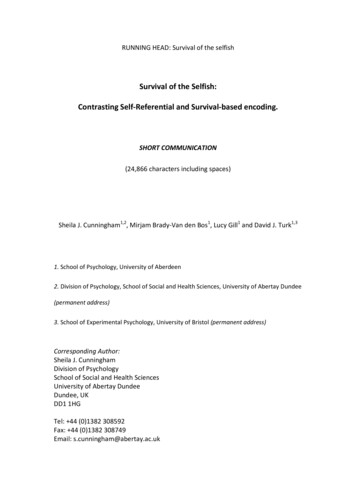

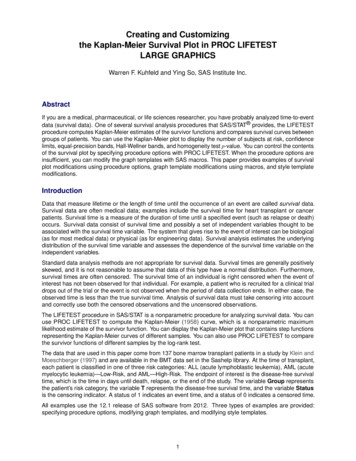



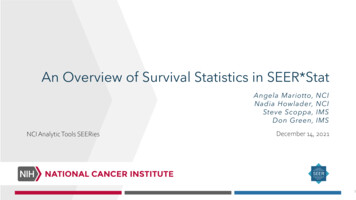

![[ST] Survival Analysis - Stata](/img/33/st.jpg)
